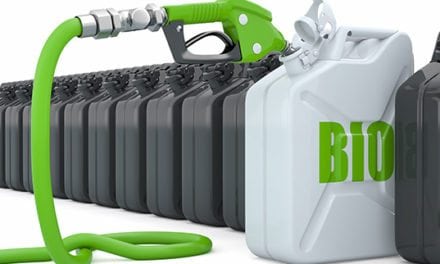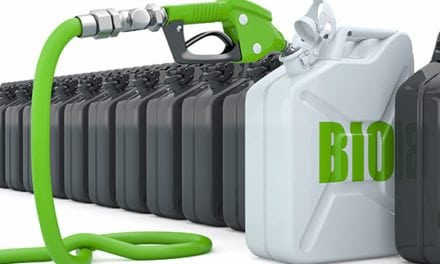By Keith Reid
EPA is looking to substantially tighten up current ozone air quality standards. The proposal, still technically open to stakeholder input, looks to set a standard of between 65-70 parts per billion instead of the current 75ppb set in 2008. EPA is also proposing to strengthen the “secondary” ozone standard to a level within 65 to 70ppb to protect plants, trees and ecosystems from “damaging” levels of ground-level ozone. As EPA noted, The Clean Air Act requires EPA to review the standards every five years. EPA will issue the final ozone standards by Oct. 1, 2015.
“Bringing ozone pollution standards in line with the latest science will clean up our air, improve access to crucial air quality information, and protect those most at-risk. It empowers the American people with updated air quality information to protect our loved ones—because whether we work or play outdoors—we deserve to know the air we breathe is safe,” said EPA Administrator Gina McCarthy. “Fulfilling the promise of the Clean Air Act has always been EPA’s responsibility. Our health protections have endured because they’re engineered to evolve, so that’s why we’re using the latest science to update air quality standards—to fulfill the law’s promise, and defend each and every person’s right to clean air.”
A cynic might simply consider this another example of the many assaults on fossil fuels by the Obama administration, using agency regulations to accomplish what cannot be accomplished legislatively in Congress [note: Bloomberg link now dead].
According to EPA, the examination of numerous scientific studies indicate: …that exposure to ozone at levels below 75 ppb–the level of the current standard–can pose serious threats to public health, harm the respiratory system, cause or aggravate asthma and other lung diseases and is linked to premature death from respiratory and cardiovascular causes. Ground-level ozone forms in the atmosphere when emissions of nitrogen oxides and volatile organic compounds “cook” in the sun from sources like cars, trucks, buses, industries, power plants and certain fumes from fuels, solvents and paints. People most at risk from breathing air containing ozone include people with asthma, children, older adults, and those who are active or work outside. Stronger ozone standards will also provide an added measure of protection for low income and minority families who are more likely to suffer from asthma or to live in communities that are overburdened by pollution.
According EPA: …strengthening the standard to a range of 65 to 70ppb will provide significantly better protection for children, preventing from 320,000 to 960,000 asthma attacks and from 330,000 to 1 million missed school days. Strengthening the standard to a range of 70 to 65ppb would better protect both children and adults by preventing more than 710 to 4,300 premature deaths; 1,400 to 4,300 asthma-related emergency room visits; and 65,000 to 180,000 missed workdays.
According to EPA, speculative health savings will far offset any actual costs: EPA estimates that the benefits of meeting the proposed standards will significantly outweigh the costs. If the standards are finalized, every dollar we invest to meet them will return up to three dollars in health benefits. These large health benefits will be gained from avoiding asthma attacks, heart attacks, missed school days and premature deaths, among other health effects valued at $6.4 to $13 billion annually in 2025 for a standard of 70ppb, and $19 to $38 billion annually in 2025 for a standard of 65ppb. Annual costs are estimated at $3.9 billion in 2025 for a standard of 70ppb, and $15 billion for a standard at 65 ppb.
Obviously, there is significant industry push back.
National Association of Manufacturers (NAM) President and CEO Jay Timmons issued this statement in response to EPA’s announcement: “Manufacturers in the United States are working hard for a manufacturing comeback, attempting to utilize America’s unmatched energy resources, building hundreds of billions of dollars’ worth of new facilities across the country. These are the facilities that make advanced cars and trucks, steel pipelines, fertilizer to grow our crops and roofing and insulation that keep our energy bills down. This new ozone regulation threatens to be the most expensive ever imposed on industry in America and could jeopardize recent progress in manufacturing by placing massive new costs on manufacturers and closing off counties and states to new business by blocking projects at the permitting stage.
This new standard comes at the same time dozens of other new EPA regulations are being imposed that collectively place increased costs, burdens and delays on manufacturers, threaten our international competitiveness and make it nearly impossible to grow jobs. Before the Obama Administration moves the goalposts with yet another set of requirements that will make it more difficult for manufacturers across the country, they need to allow existing ozone standards to be implemented and give time to American businesses to meet those already stringent and onerous requirements.”
A NAM study estimates that this regulation could reduce GDP by $270 billion per year and carry a compliance price tag of $2.2 trillion from 2017 to 2040.
On the fuels front, according to EPA: A combination of recently finalized or proposed air pollution rules—including “Tier 3″ clean vehicle and fuels standards—will significantly cut smog-forming emissions from industry and transportation, helping states meet the proposed standards. EPA’s analysis of federal programs that reduce air pollution from fuels, vehicles and engines of all sizes, power plants and other industries shows that the vast majority of U.S. counties with monitors would meet the more protective standards by 2025 just with the rules and programs now in place or underway. Local communities, states, and the federal government have made substantial progress in reducing ground-level ozone. Nationally, from 1980 to 2013, average ozone levels have fallen 33 percent. EPA projects that this progress will continue.
PMAA President Dan Gilligan noted the following in an FMN interview: “The revised ozone standards are another big deal, and not just for us but the entire country,” he said. “If EPA does the worst, Yellowstone will end up in non-attainment. It’s hard to believe, but it’s absolutely true. Once they start tightening down the ozone standards the reformulated gasoline markets will expand, perhaps doubling, and right there you’re talking a dime a gallon in most cases. That is certainly a concern.
“I’m going to guess that they are going to lower the current standard, and they might set it at 70ppb or whatever the number is, but even that is going to be costly. But it’s not going to be deadly costly. Now that the election is over, those are things they are going to get done before they leave, but maybe they will make some mistakes and give lawyers something to go to court over—which is always the hope.”
API President and CEO Jack Gerard stated the following in a release: “Air quality has improved dramatically over the past decades and will continue to improve as EPA and states implement existing standards, which are the most stringent ever,” Gerard said. “Careful review of the science shows that the current standards already protect public health. Tightening these standards could be the most expensive regulation ever imposed on the American public, with potentially enormous costs to the economy, jobs, and consumers.”
API noted that states have only just begun to implement the 2008 standards. EPA’s implementation guidance for the 2008 rule has not yet been released, and the challenges of meeting new standards would be massive and disruptive to states and businesses.
“Tightened standards could impose unachievable emission reduction requirements on virtually every part of the nation,” Gerard said. “Even pristine areas with no industrial activity such as national parks could be out of attainment. Needless to say, operating under such stringent requirements could stifle new investments necessary to create jobs and grow our economy. The right policy choice is to implement the current standards and allow air quality to continue to improve.”
It should be noted that while it’s not uncommon for industry groups to magnify policy impacts to benefit their positions, the same is certainly true of governmental entities.
EPA began seeking public comment on the proposal on Nov. 26, which will continue for 90 days. The agency also plans to hold three public hearings. EPA openness to stakeholder points of view has been mixed, at best, but in this case the agency might be very receptive. It noted that such input might even suggest lowering the standard further than initially suggested, to 60ppb.









